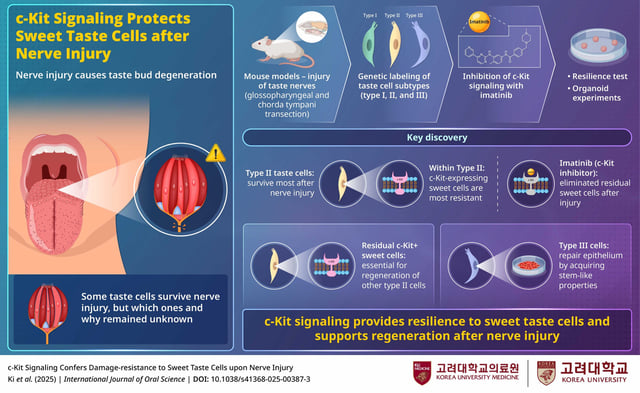Overview
- Researchers at Korea University report that sweet-detecting taste cells expressing c-Kit persist after nerve damage and act as the starting point for rebuilding taste buds.
- Mouse nerve-transection studies showed these c-Kit–positive cells endured injury while other taste-cell types declined.
- Blocking c-Kit with the cancer drug imatinib removed the surviving sweet cells and prevented the regeneration of other taste cells.
- Taste-bud organoid assays supported the in vivo findings, with c-Kit–positive cells continuing to grow even when typical survival factors were withdrawn.
- Some Type III taste cells adopted stem-like roles to repair surrounding epithelium, pointing to cell-type-specific recovery pathways with preclinical implications for taste disorders.
